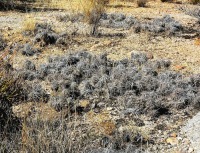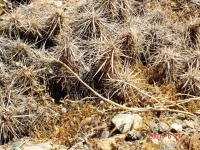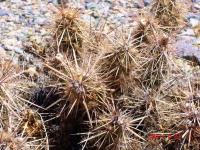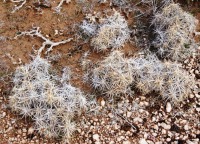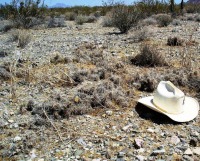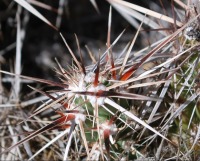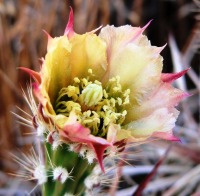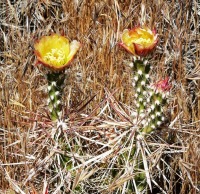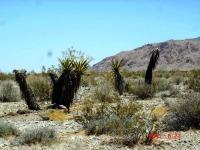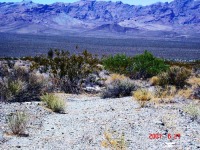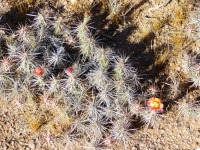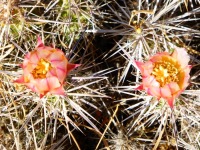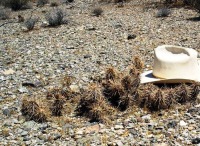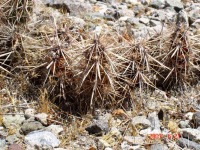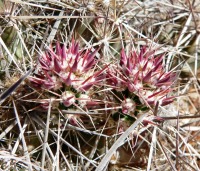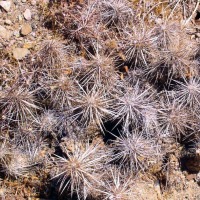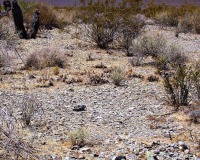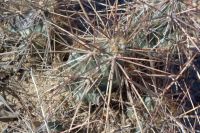Orcutt. 1896 The West-American Scientist 10: 81.
Herbarium specimen; Herbarium specimen; Herbarium specimen; Herbarium specimen; Herbarium specimen; Herbarium specimen; Herbarium specimen; Herbarium specimen; Herbarium specimen; Herbarium specimen; Drawing (Britton and Rose, v1, 1919)
Original species description
Flora of North America treatment
What is Grusonia parishii?
Grusonia parishii is a dog cholla that grows along the ground in mats about 2- to 6-inches tall. The plant is commonly but sporadically found in the Mojave Desert below 1000 m.
Details
Overall, G. parishii resembles G. clavata. The plants are 10(30) to 100 cm across. The clavate cladodes are 5-9 × 2-3 cm with prominent tubercles (15-25 mm, narrow, 4-6 times longer than wide) that are obscured by interlacing spines. The areoles are 5 mm in diameter and have grayish-white wool. There are 14-17(-22) spines per areole, mostly in distal areoles or +/- uniformly distributed; spines are white to brownish and tipped yellow. The major 5-6 abaxial spines are strongly deflexed and flattened, and the longest one is white margined (25-45(-58) mm). The central spine is brown or white and long tapered. About 5 adaxial spines are divergent, blackish or brown to tan, subterete, and angular-flattened at the base; the longest may be up to 42 mm. Glochids are yellow and 5-8 mm. Reports are confusing, but perhaps the species occurs rarely in the northern Sonoran Desert. Many plants have dead branches, and many branches appear dead only to spring to life when rains arrive. G. parishii is diploid.
